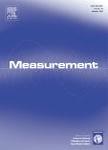版权所有:内蒙古大学图书馆 技术提供:维普资讯• 智图
内蒙古自治区呼和浩特市赛罕区大学西街235号 邮编: 010021

作者机构:Tech Univ Kosice Kosice 04120 Slovakia Budapest Univ Technol & Econ Budapest Hungary
出 版 物:《MEASUREMENT》 (Meas J Int Meas Confed)
年 卷 期:2013年第46卷第10期
页 面:4362-4368页
核心收录:
学科分类:08[工学] 080401[工学-精密仪器及机械] 0804[工学-仪器科学与技术] 081102[工学-检测技术与自动化装置] 0811[工学-控制科学与工程]
基 金:Science Grant Agency of the Slovak Republic [1/0555/11] Agency of the Ministry of Education of the Slovak Republic for the Structural Funds of the EU under the project Centre of Information and Communication Technologies for Knowledge Systems
主 题:ADC test Maximum likelihood estimation Least squares method LS method Four-parameter fit Signal recovery Estimation of signal parameters Gradient-based method Differential evolution
摘 要:ADC test methods require the best possible reconstruction of the input signal of the ADC under test from the acquired, therefore erroneous, ADC output data. The commonly used least squares (LS) fit and the recently introduced maximum likelihood (ML) estimation are competing methods. This paper presents a simulation-based comparative study of these estimation methods with the goal to investigate the behavior of both methods and to determine their limits. Two alternative algorithms for the calculation of the maximum likelihood fit are considered (gradient-based minimization and differential evolution). The main finding is that while for low-INL (linear) ADCs the two methods (LS and ML) give similar results, for practical (almost always nonlinear) ADCs ML is definitely better. (C) 2013 Elsevier Ltd. All rights reserved.